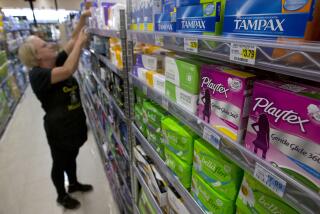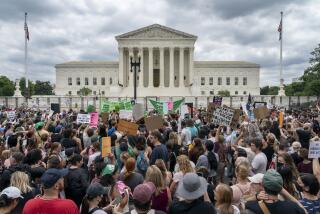For many teens, formal sex education comes too late, CDC report says
- Share via
Health experts have some simple advice for reducing the teen birthrate in the U.S. — make sure teens learn about abstinence and birth control before they start having sex.
It sounds obvious, but it’s obviously needed, according to a report released Tuesday by researchers from the Centers for Disease Control and Prevention. Among teen girls who were sexually experienced, 83% told interviewers that they didn’t get formal sex education until after they’d lost their virginity.
Altogether, 91% of young women between the ages of 15 and 17 said they’d taken a formal sex education class that covered information about birth control or ways to say no to sex (and 61% said they’d learned about both). In addition, 76% of girls in this age group discussed one or both of these topics with their parents.
But timing is everything. The fact that most sexually active young women didn’t get clued in about abstinence or birth control until after they’d had sex “represents a missed opportunity to introduce medically accurate information,” the researchers wrote.
The study, published online in the CDC’s Morbidity and Mortality Weekly Report, noted that:
—14.6% of 15-year-olds had ever had sex, including 8% who were sexually active in the previous three months;
—28.5% of 16-year-olds had ever had sex, including 16.5% who were sexually active in the previous three months; and
—38.6% of 17-year-olds had ever had sex, including 29.7% who were sexually active in the previous three months.
Only 15% of these teens used a birth control method that was deemed at least “moderately” effective the first time they had sex, including the pill, vaginal ring, IUD or hormonal implant. Another 62% used a “less effective” method, such as condoms, sponges, the rhythm method or withdrawal. The remaining 23% said they didn’t use any type of contraception when they lost their virginity, the researchers reported.
Overall, the teen birthrate continued to decline, according to data from the CDC’s National Vital Statistics System. In 2012, the birthrate hit an all-time low of 29.4 per 1,000 women between 15 and 19. (In 1991, there were 84.1 births for every 1,000 women in that age group.)
The birthrate declined even more among the subset of teens who are not yet legal adults. For every 1,000 15-year-olds, 5.4 babies were born in 2012 (down from 17.9 in 1991). Among 16-year-olds, the birthrate was 12.9 in 2012 (down from 36.9 in 1991), and for 17-year-olds it was 23.7 in 2012 (down from 60.6 in 1991).
Birthrates among these younger teens varied significantly by state and by race and ethnic group, the CDC researchers found. The District of Columbia had the highest rate, at 29 births per 1,000 women 15 to 17. At the other end of the spectrum was New Hampshire, with 6.2 births per 1,000.
Nationwide, Latina teens had the highest birthrate, at 25.5 births per 1,000 women 15 to 17. Asian American teens had the lowest birthrate in this age group, at 4.1. In the middle were whites (8.4), Native Americans (17) and African Americans (21.9), according to the report.
The study did not include data on births to girls under 15. It also excluded information on miscarriages, abortions and stillbirths, since recent figures for those were not available.
Public health experts are especially concerned about births to younger teens because these mothers “are at greatest risk for poor medical, social, and economic outcomes,” the researchers noted. Among other challenges, new mothers in this age group are significantly less likely to finish high school than teens who gave birth at age 18 or 19.
About one in four teen births is to a young woman between 15 and 17, according to the CDC. Every week, nearly 1,700 babies are born to mothers in this age group.
If you’re interested in the latest scientific and medical studies, you like the things I write about. Follow me on Twitter and “like” Los Angeles Times Science & Health on Facebook.
[For the Record, 5:15 p.m. PDT April 8: A graphic produced by the CDC that previously accompanied this post said that 1 in 4 teens between the ages of 15 and 17 are giving birth. It meant to say that about 1 in 4 teen births involved teens in that age group, as stated in the story.]







